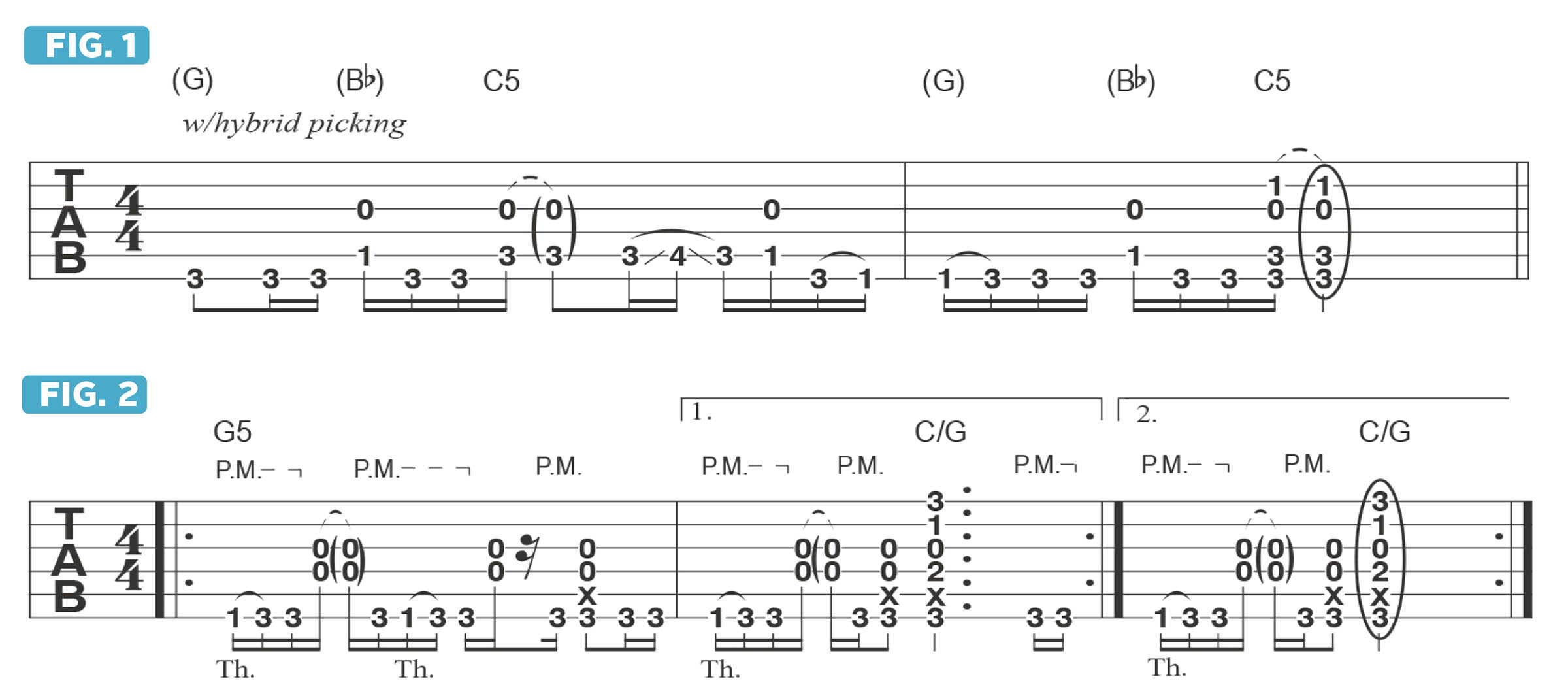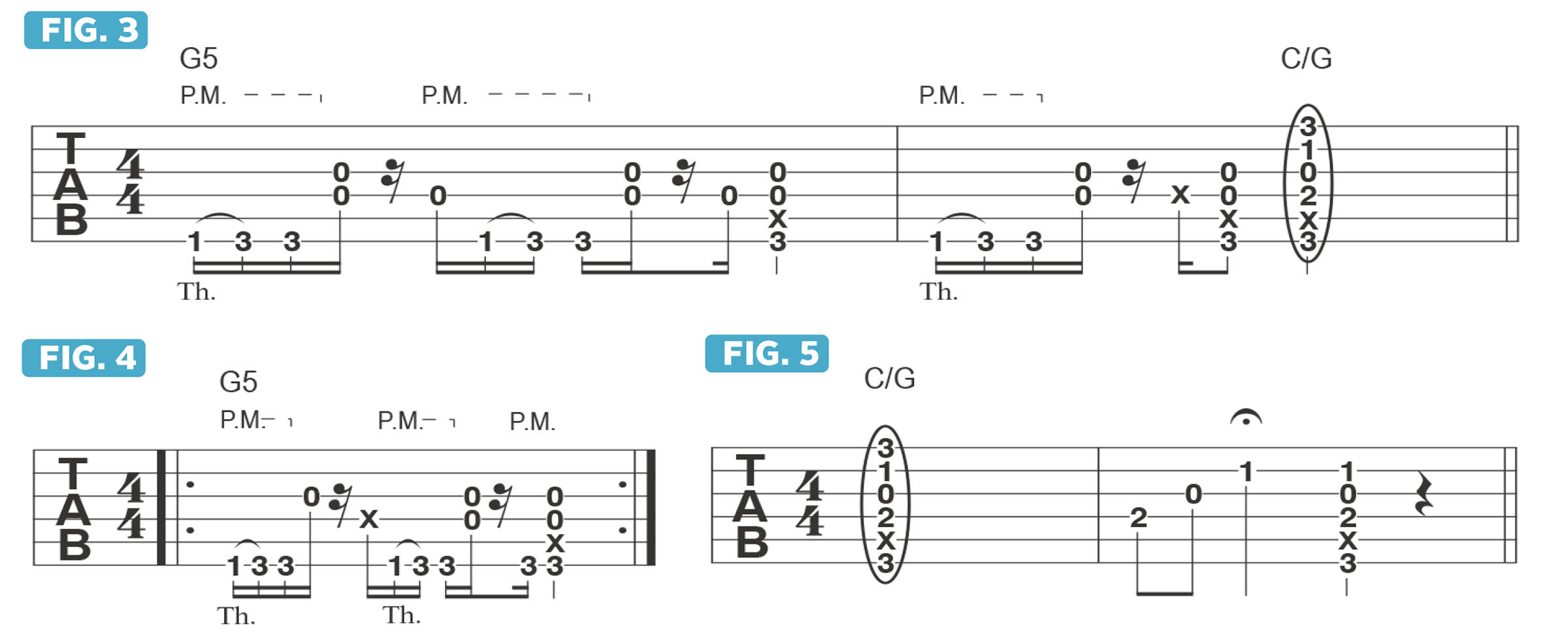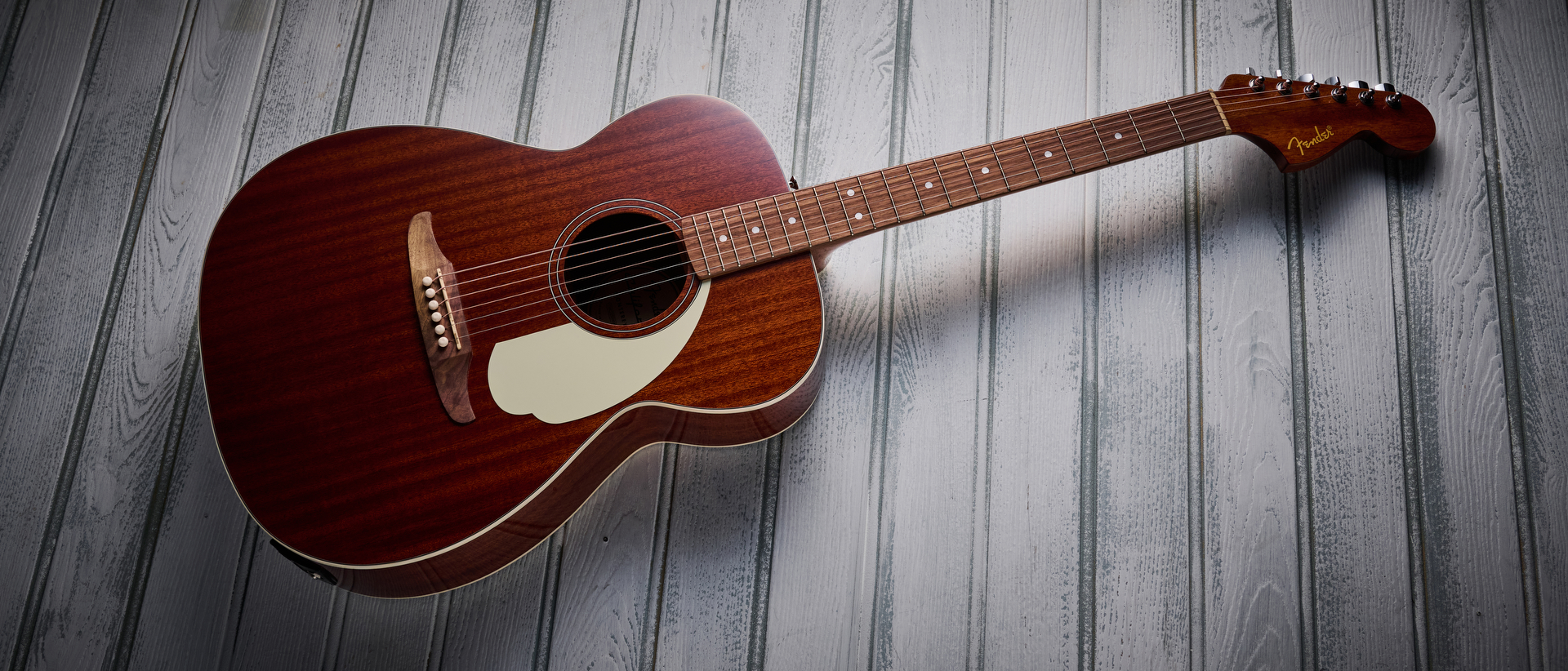“Fret-hand muting is a technique that’s not often talked about, but I find it invaluable while using an overdriven tone”: How fret-hand muting can clean up your picking technique – especially with gain
Texan maestro David Grissom shows us how we can tidy up our hybrid picking and help accentuate syncopated rhythms in our playing

Hybrid picking is a combination of fingerpicking and flatpicking. For most applications, I’ll clasp the pick between my pick-hand index finger and thumb, as I’d normally hold it, and use the pick to strike the low strings with downstrokes while picking the higher strings with my middle and ring fingers, and sometimes the pinkie too.
In many cases, using hybrid picking allows me to selectively include one or more open-string drone notes along with flatpicked fretted notes on lower strings.
Let’s look at the verse rhythm part of Way Down Deep, the title track from my 2011 solo album. This is a song I often perform live, so the first thing I always do when we come to this part of the tune is to turn my guitar’s volume down a little bit.
There are two reasons for this: 1) to allow the vocal to sit nicely above the guitar part, and 2) to clean up the overdriven tone while also affording me the opportunity to dig in harder on the rhythm part for added dynamic contrasts.
Figure 1 illustrates the riff as played at the end of the intro, at which point I’ll roll back the volume a little and launch into the verse part, shown in Figure 2. This is essentially a two-bar pattern that repeats, with a first and second ending:
Throughout this part, I use my left thumb to fret the low F note at the 1st fret then hammer-on to the 3rd fret with my ring finger to sound G. And, in a rare occurrence here, there’s no hybrid picking used at all, as I’m instead strumming the strings with my pick.
A benefit of hybrid picking is that it enables clear articulation between lower and higher strings. In lieu of hybrid picking here, I’ll sometimes use pick- and fret-hand muting techniques when strumming, in order to achieve a similar type of clarity.
All the latest guitar news, interviews, lessons, reviews, deals and more, direct to your inbox!
When playing Figure 2, I’ll palm mute (P.M.) the lower strings at the bridge, to mute them and prevent unwanted ringing.
Additionally, I’ll use the underside of my fret hand’s 3rd finger to mute the A string, while also intermittently releasing pressure with that fingertip to stop the low G note from ringing continually and get more of a staccato sound (short, detached notes).
Figures 3 and 4 offer a clearer look at this technique. Notice that the A string remains muted when I strum the C/G chord in bars 2 and 4, as shown in Figure 5.
Figure 6 illustrates the second part of the verse rhythm part, which is built from the progression Em7 - Fadd9 (or Fsus2) - Em7 - Fadd9. This is followed by a restatement of the implied G - Bb - C changes, akin to the intro.
Fret-hand muting is a technique that’s not often talked about and sometimes impossible to notate, but it’s what serves to create the rhythmic syncopation that’s integral to this particular part, and I find it invaluable while using an overdriven tone.
David Grissom has toured or recorded with Buddy Guy, John Mellencamp, Storyville, the Allman Brothers Band, Robben Ford and John Mayall. In 2022, Guitar World named him one of the 30 greatest Texas guitarists of all time.


